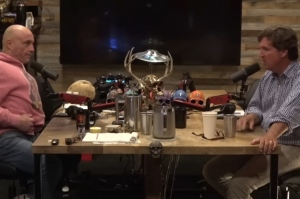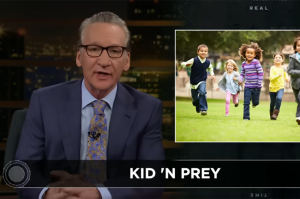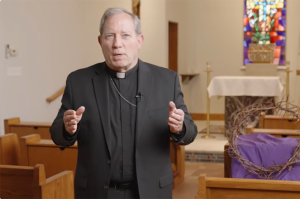Australia Hopes Nicole Kidman Film Spurs Tourism
SYDNEY, Australia – The film camera sweeps across the landscape, taking in flat plains, gushing waterfalls and a dusty country town. The color is brilliant, the emptiness palpable, and the soundtrack soars dramatically as warplanes bomb a city.
This is "Australia," the new movie by award-winning director Baz Luhrmann. The World War II-era romantic epic, which opens later this month, has already been hailed for its cinematography and its pairing of Australian film stars Nicole Kidman and Hugh Jackman.
But tourism promoters claim the real star of the movie is the country itself.
Tourism Australia, the national tourism board, has launched a $26 million international advertising campaign based on the movie, highlighting the wilderness of Western Australia state and encouraging tourists to refresh themselves by getting away from bustling cities and their busy daily lives.
"We knew that this huge film would create a wave of publicity that would put the country in the spotlight around the globe," said Geoff Buckley, managing director of Tourism Australia. "And we found that the film's story had a remarkable resonance for what we do marketing the country as a travel destination."
The movie premieres Tuesday in Sydney — where the stars will attend — as well as Darwin, Bowen and Kununurra. It opens internationally on Nov. 26.
The film follows the story of a noblewoman on a cattle drive in Australia during World War II. The movie was filmed largely in rugged Western Australia, notably in and around the small town of Kununurra, a three-hour flight north of Perth, and in the California-sized Kimberley wilderness region.
Other film sites include working cattle stations at El Questro and Home Valley, the sandstone escarpments of the Cockburn Range and the striped mounds of the Bungle Bungle Range in Purnululu National Park, a UNESCO World Heritage site.
The movie's World War II scenes were mostly filmed in the northwest city of Darwin, where Japanese raids in 1942 and 1943 killed more than 900 people. Visitors to real-life Darwin can see a war memorial related to that attack as well as Stokes Hill Wharf, which provided the backdrop for some of the harbor scenes.
Other movie scenes set in Darwin were shot in Bowen, Queensland, a beach town north of the Whitsunday Islands. The real-life Strickland House at Vaucluse on Sydney Harbour, a historic 1850s villa and garden estate, served as the location for filming the movie's "Darwin Government House."
Various tour operators have begun offering tours of the Kimberley region in connection with the movie, and the state of Western Australia has begun its own $1.4 million tourism campaign of cinema, print, online advertisements and in-flight television.
"We want to make sure that moviegoers who are inspired to visit the region know that it's actually WA's stunning landscapes and outback adventure they're longing for," state tourism minister Liz Constable said in a statement last week.
The Northern Territory, where Darwin is situated, has also launched a $393,000 tourism campaign in the wake of the movie, touting the territory as "the real outback."
Northern Territory Chief Minister Paul Hnderson said the movie "really is going to put us on the map."
The national tourism campaign, dubbed "Come Walkabout," includes two commercials directed by Luhrmann, an Australian. The commercials, broadcast in 23 countries, feature busy professionals who are visited by a young Aboriginal child who sprinkles red dust into their hands.
"Sometimes, we have to get lost to find ourselves," the child whispers. "Sometimes, we gotta go walkabout." The overworked businessperson is then transported to a moonlit picnic under a baobab tree, or a refreshing swim in a billabong.
The ethereal campaign was criticized by erstwhile Australian celebrity Paul Hogan, of "Crocodile Dundee" fame. Decades ago, he starred in the "Throw Another Shrimp on the Barbie" tourism ads, which Hogan said highlighted the hospitality and friendliness that Australians are known for.
"If I go to your house for a visit and I want to come back, it's because I enjoyed your company, not your furniture," he told reporters recently. He complained that the new campaign ignored real Australians to instead focus on impersonal nature.
But if the campaign works, it wouldn't be the first time that a movie spurred tourism. Annie Dundas, U.S. regional manager for Tourism New Zealand, said that "The Lord of the Rings" movies were among "the biggest contributors to awareness for New Zealand from '03-06." She estimated that tourism numbers rose between 3-5 percent in each of the years that movies in the trilogy were released.
"We called it our three-hour commercial," she joked, adding that the blockbuster films "put New Zealand on the map for a larger proportion of Americans than we could have hoped to achieve through just advertising."
Australian tourism boards, meanwhile, are counting on the country's natural beauty to lure moviegoers across the seas.
Another lure? Kidman has spoken in interviews of the "fertility waters" of Kununurra, saying that she and six other women on the film became pregnant after swimming among the waterfalls outside the town.




























